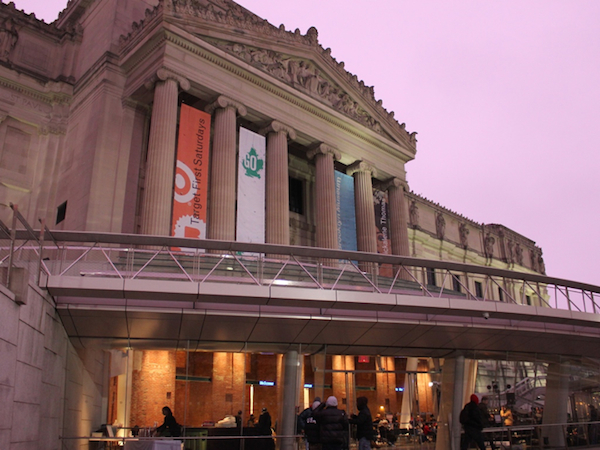Visitor Powered Technology to Create a Responsive Museum
We are incredibly excited that Bloomberg Philanthropies has funded a three-year initiative as part of Bloomberg Connects and it gives us the opportunity to significantly improve our visitor experience through the use of technology. We’ve got one goal and that’s to create a dynamic and responsive museum that fosters dialogue and sparks conversation between staff and all Museum visitors.
How high a bar is that, really? We could start by acknowledging that “dynamic and responsive” are not words commonly associated with “museum.” After all, exhibitions are planned many years in advance and getting new information out onto the floors (installations, object rotations, labels, didactics, signage) has a multilayered approval process that could be considered, at best, fairly structured.

This initiative challenges us to become an even more responsive institution.
Next, we’ve got thousands of visitors coming through our doors every week. Each person has specific needs, so the idea of becoming truly responsive in a way that speaks to everyone is a challenge. On a normal day we aim for general accessibility through a set of standards, but this doesn’t consider the unique needs of each visitor.

Everyone streaming through our doors has unique needs. How can we serve them better and how can their needs change our Museum?
Can we create a dynamic and responsive museum? Yes, without question. The challenge comes in creating a dynamic and responsive museum that is sustainable. This is where both technology and the wisdom of crowds can help us greatly.
In the project you will see deployed over the next three years, visitors will be empowered to ask questions using their mobile devices as they explore the museum and our experts will answer incoming queries in real time. Location aware technology will pinpoint where a question is being asked so that our staff can know the works of art a visitor is seeing and better answer their query.
Enabling visitors to get their questions answered is, in itself, incredibly meaningful, but there’s an even bigger opportunity here for broader institutional change. As people connect with us using the platform, it gives us a window into our visitor experience and how well (or not) things are working throughout our galleries. By looking at trends within the information exchanged, we can re-examine existing information provided in our galleries and make changes accordingly to better serve all visitors, including those who never use a mobile device during their visit.
As many of you know, the Museum has a community-driven mission and, in the past, we’ve often used technology to foster personal interaction in a way that treats each individual as unique and aims to give our visitors a sense of ownership in the institution. This project will do the same and such a significant grant allows us to do so on a scale that rethinks the entire museum experience from a visitor’s entry to exit.
As we move forward through this project, you’ll find many of us blogging our progress. Authors will include my project partner, Sara Devine, and, also, our entire web team as we work to build, test, deploy, and change.

Shelley Bernstein is the former Vice Director of Digital Engagement & Technology at the Brooklyn Museum where she spearheaded digital projects with public participation at their center. In the most recent example—ASK Brooklyn Museum—visitors ask questions using their mobile devices and experts answer in real time. She organized three award-winning projects—Click! A Crowd-Curated Exhibition, Split Second: Indian Paintings, GO: a community-curated open studio project—which enabled the public to participate in the exhibition process.
Shelley was named one of the 40 Under 40 in Crain's New York Business and her work on the Museum's digital strategy has been featured in the New York Times.
In 2016, Shelley joined the staff at the Barnes Foundation as the Deputy Director of Digital Initiatives and Chief Experience Officer.


Start the conversation